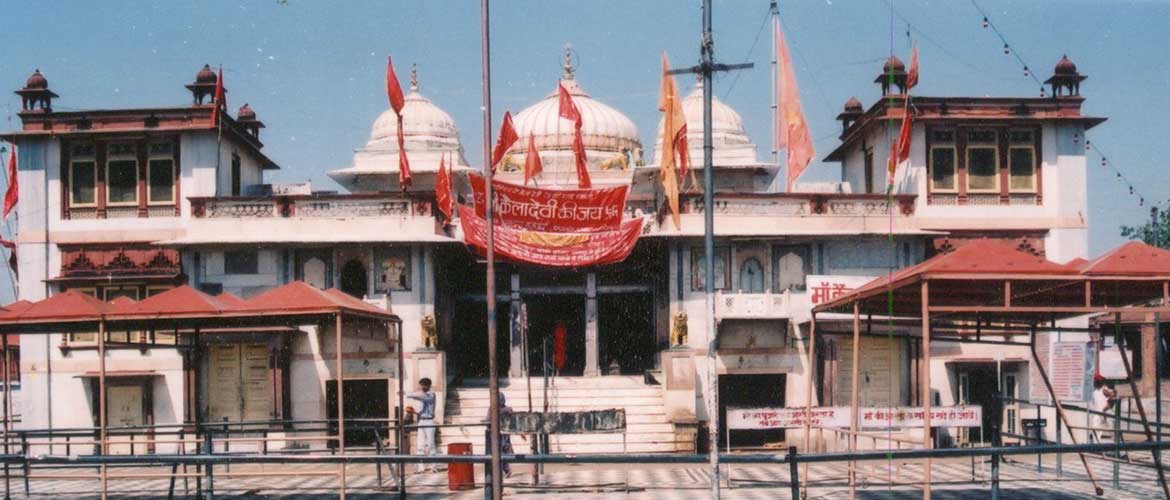Karauli’s story began in the 14th century, when one Arjun Pal founded the town. It
Today, the walled city, with the bastioned fort looming large over the crumbling chhatris along the River Bhadrawati, evokes a prosperous past. But, much like many small north-Indian towns, the increasing neglect of Karauli’s poorer areas points to contemporary, unsavoury realities.
THING TO SEE AND DO
Karauli’s main attraction, the City Palace, is reached via a narrow road through a crowded bazaar. Though parts of the palace have been ransacked by local pillagers, it is still very beautiful. The Bhanwar Vilas Palace Hotel arranges horse riding and horse safaris. Rates vary from ₹250 for a 2-hr ride to ₹1,000 for a full-day safari (prices inclusive of snacks, mineral water and a guide.
City Palace
Start off with the City Palace, which you’ll enter from the Ganesh Gate. Arjun Pal built the palace, along with the town, in the 14th century. However, little or nothing of the original can now be seen. What you do see is the structure erected by Raja Gopal Singh in the 18th century. He chose to adopt the Delhi style of architecture – the abundance of red sandstone in Karauli made this rendering easy. The more embellished additions came in the 19th century. White and off-white stones have been used very elegantly, painted upon with bright blues, reds, browns and oranges. From the terrace atop the palace, you can see the town laid out by the River Bhadrawati below, and the ravines and hills beyond. The labyrinthine pathways through the palace and the many stair ways climbing up and down should afford you a happy half-day.

The Diwan-e-Aam, the hall where the king met his subjects, has exquisite floral patterns in bright colours on the walls and ceiling as well as painted wooden doors. The upper floor has jaali work on the walls, from behind which queens could observe the goings-on below. The coloured glass jharokhas of the Rang Mahal, with their one-way visibility, made for beautiful purdahs. The mirror theme continues from the hall to the walls and ceilings of the bedrooms. Barahdwari, the women’s dance hall, is lined with moustachioed portraits of the kings of yore.
Entry Indians ₹15; Foreigners ₹100 (inclusive of camera fee) Timings 6.00am-7.00pm
Shrines and Cenotaph
The Madan Mohan Temple, adjacent to the palace, is a Vishnu temple. It is considered highly auspicious to visit the Govindji and Gopinath temples of Jaipur and the Madan Mohan Temple of Karauli on the same day. The chhatri of Raja Gopal Singh, outside the Nadi Gate leading out of the palace to the river below, is adorned with frescoes. Dayanand Saraswati, the 19th-century reformer and founder of the Arya Samaj, is said to have given a sermon here. Unfortunately, it is a neglected relic, with both the cenotaph and riverside mired in filth.
Temple timings Summer: 4.00-11.30am & 6.30-9.00pm; Winter: 5.00am-12.30pm & 5.30-8.00pm

Karauli Cattle Fair
Every February, thousands of animals tramp into the town for a fair that coincides with the religious festival of Maha Shivaratri. Competitions provide both spectacle and a means to pick out the best of the animals. It would be well worth your while to visit Karauli and witness the fair in February. You will also get to buy many goods usually not available in Karauli such as Nagauri bead necklaces, Jodhpuri brassware and horn decorations at the stalls.
Fair venue Near the Mela Gate Timings 6.00am-7.00pm
WHERE TO STAY AND EAT
Most of the options here are rudimentary except for the Bhanwar Vilas Palace (Tel: 07464-220024, Cell: 09929773744; Tariff: ₹4,800-6,000), a heritage property.
The hotel offers folk dances and camel or horse rides. The chef is excellent and the service amiable.
At Hindaun Morh, there are some dhabas that offer reasonably good vegetarian dishes and superb besanmixed rotis. Inside the walled city, Khana Khazana, near Ganesh Gate, is a decent nonvegetarian option. There are hardly any eating options outside Karauli Town. Mineral water is available only in town.
When to go From early winter to spring Location The erstwhile state (and, since 1997, the district) of Karauli occupies the rugged region to the north of the Chambal Valley. With Jaipur, Bharatpur and Gwalior for its neighbours, the town is situated on the banks of the River Bhadrawati Rail Nearest railhead: Gangapur City
Bhadrawati River
Cenotaphs
Chhatris


